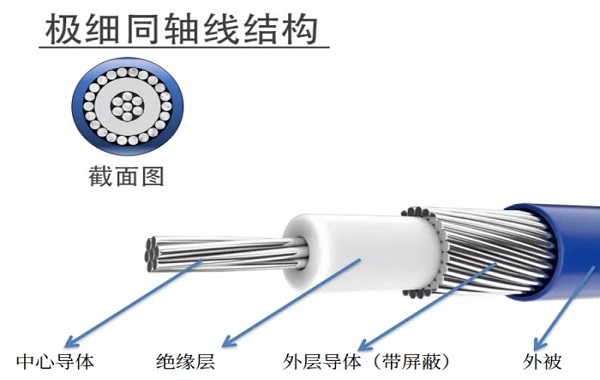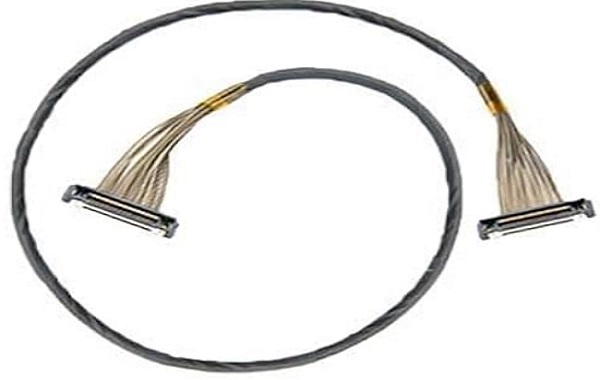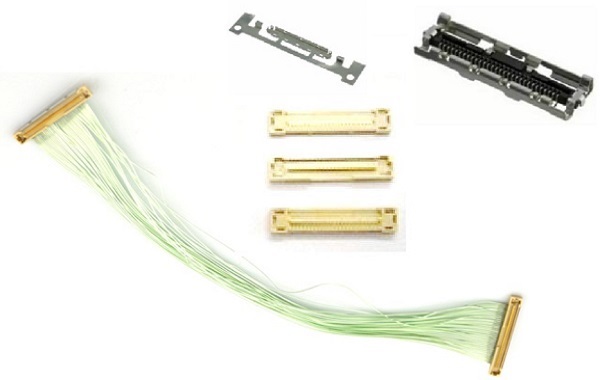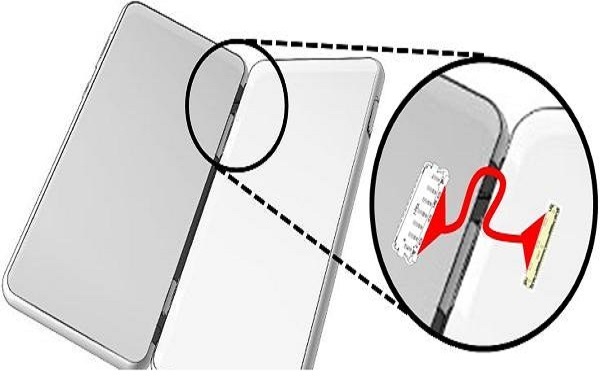Categorization:Harness Component
As electronic devices develop towards high-speed, thin, and multifunctional directions, extremely thin coaxial cable harnesses are widely used in smartphone camera modules, vehicle imaging systems, AR/VR display modules, and other fields. These harnesses are responsible for transmitting Gbps-level high-speed signals and place extremely high requirements on electromagnetic compatibility (EMC), signal integrity (SI), and mechanical flexibility. One of the core design elements that support these performance characteristics is the shielding mesh layer.
First defense line of EMI/EMC
The primary function of shielding layers is to suppress electromagnetic interference (EMI). In high-speed signal transmission, if effective shielding is lacking, signals are prone to be coupled by external electromagnetic fields, leading to an increase in error rate; at the same time, the electromagnetic radiation of the signal itself may interfere with surrounding electronic devices. The shielding layer is equivalent to a Faraday cage, which can significantly reduce radiation and conduction interference, thereby ensuring that the whole machine passes the EMC certification and meets the requirements of electromagnetic compatibility standards.
Two, complete return path and signal integrity guarantee
In high-speed differential signal systems (such as MIPI D-PHY, HDMI, LVDS, etc.), the shielding layer often serves as a ground reference plane, providing a continuous return path for the signal. If the return path is discontinuous, the current will detour, causing impedance mismatch and thus causing reflections (increased return loss) and eye diagram closure. The presence of the shielding layer effectively stabilizes the transmission impedance, ensures signal integrity (SI), and thus improves the overall transmission quality and anti-interference ability of the system.
Reduce crosstalk and improve signal-to-noise ratio
In the densely packed extremely thin coaxial cable bundles, there is a tendency for differential signals to generate near-end crosstalk (NEXT) and far-end crosstalk (FEXT). The shielding mesh layer plays a physical isolation role, which can significantly reduce the crosstalk coefficient, improve the signal-to-noise ratio (SNR), and maintain the stability of the signal chain. This is particularly important for systems with parallel signals such as image transmission and sensor control, as it can effectively prevent performance degradation caused by interference between signals.
Four, balance of flexibility and shielding efficiency
Common shielding structures include foil shielding and woven shielding. Foil shielding has a high coverage rate and excellent shielding performance, but lacks flexibility and is prone to fatigue fracture during dynamic bending; while woven shielding, although with slightly lower coverage, possesses excellent mechanical flexibility and bending life, which is suitable for frequently moving applications such as foldable screens and camera modules. Therefore, during the design phase, a trade-off needs to be made between shielding efficiency (Shielding Effectiveness) and flexibility reliability to ensure the comprehensive performance of the product in actual use.
Five, High-frequency Performance and Impedance Control
The extremely fine coaxial cable assembly operates at GHz frequency bands and has strict requirements for impedance consistency. The geometric ratio between the shielding layer and the inner conductor directly determines the characteristic impedance (commonly 50Ω or 100Ω differential). A reasonable shielding structure design can effectively reduce insertion loss and return loss, improve link bandwidth utilization and eye diagram opening, ensuring stable and reliable high-speed signal transmission.
The shielding layer is not only the physical protective layer for the extremely fine coaxial cable bundle, but also a key factor for its stable operation in the high-speed complex electromagnetic environment. It plays an irreplaceable role in EMI/EMC protection, signal integrity maintenance, crosstalk suppression, flexible design, and impedance control. It can be said that the performance of the shielding layer directly determines whether the extremely fine coaxial cable bundle can meet the stringent requirements of modern electronic equipment for high-speed transmission and high reliability.
I amSuzhou Huichengyuan Electronic Technology Co., Ltd.,Long-term focused on the design and customization of high-speed signal cables and ultra-fine coaxial cables, committed to providing stable and reliable high-speed interconnection solutions. If you have related needs or want to learn more, please contact:Manager Yin 18913280527 (WeChat same number)。